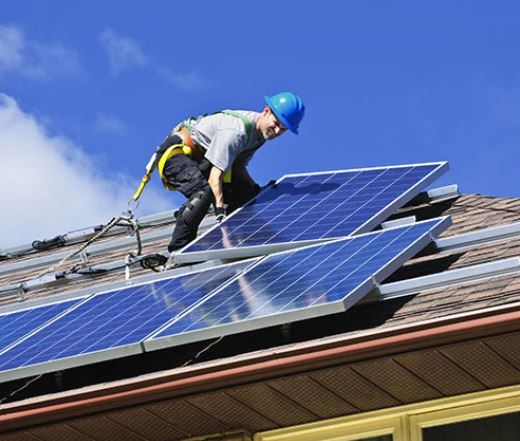Fall Prevention
Falls are one of the leading causes of serious injury and death each year in the construction industry. Fall protection devices and gear provide added protection to your employees who are working from heights.
You might think you can get a job done faster if you don’t have to spend time putting on safety equipment. But, cutting corners can have devastating effects. Falls remain one of the top causes of death in construction. It’s the law to use fall protection whenever a worker faces a serious risk of injury, including:
- Working on structures where a worker could fall more than 7 feet.
- Working on thrustouts, trusses, beams, purlins, and plates at heights over 15 feet.
- Working on a sloped roof.
To prevent falls at worksites, you should use guardrails and toeboards, or other strong fall barriers. Still, there will be areas where guardrails or other barriers aren’t going to work. That’s when workers need to use approved personal fall protection systems or positioning devices.
Personal Fall Protection
Personal fall protection systems need a tie-off and what’s called fall arrest and travel restraint. Fall arrest stops a fall within a few feet of the worker’s original position A full body harness is required with a fall arrest system. The system typically consists of a full-body harness, a lanyard, a rope grab, a lifeline, and a lifeline anchor. Workers need to wear it when working on a rolling scaffold that is being moved. Workers also need to wear it when using or getting on and off suspended access equipment. There should be an emergency plan in place in case an employee becomes suspended in a harness.
Safety Nets
It’s not always possible to use personal fall protection. In that case, use safety nets. Hang the nets far enough off the ground so that if someone falls on it, the net doesn’t hit the ground or a surface below.
Safety nets need to be within 10 vertical feet and never more than 30 feet below a working surface. Nets must extend at least eight feet beyond the building or structure. A net greater than 5 feet below the working surface must extend 10 feet beyond the building. A net from 10 feet to 30 feet below the working surface must extend 13 feet.
If you use fall protection equipment, check that you are using the right kind for the job. It should be labeled as meeting the requirements of the American National Standards Institute (ANSI). Make sure the equipment is in good condition.
Employers must set up things like temporary floors, guardrails, toeboards, or other barriers when possible. When it isn’t possible, personal fall protection or safety nets must be used. No work should happen unless the necessary fall protection is in place. However, fall protection is the first step. Learn more about what to do to keep an employee safe who is suspended in fall protection equipment.


